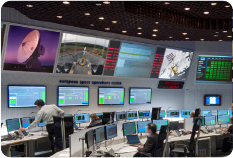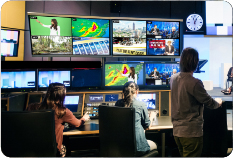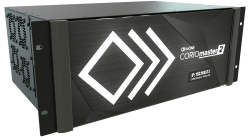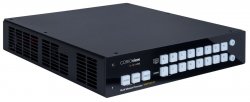Dual-link DVI is a method of combining two DVI channels into one higher resolution picture. You can't combine any two channels you like - the
graphics card (or DVI source) must support this feature and use extra pins on the DVI connector for this. 'Normal' DVI is single-link and
doesn't use these extra pins.
The two channels are sent simultaneously sharing the same video clock. The monitor (DVI receiver) combines the two channels back into one source - alternating the pixels displayed between the two channels.
Only very high resolutions, requiring pixel clocks of 160MHz or higher tend to use Dual-link DVI. Dual-link DVI cables are usually much thicker than normal DVI cables, because they have more signals within them.
Dual-link DVI can also have analog video in it, so you can get Dual-link, DVI-D, and Dual-link DVI-I.
See DVI-I DVI-A and DVI-D

















